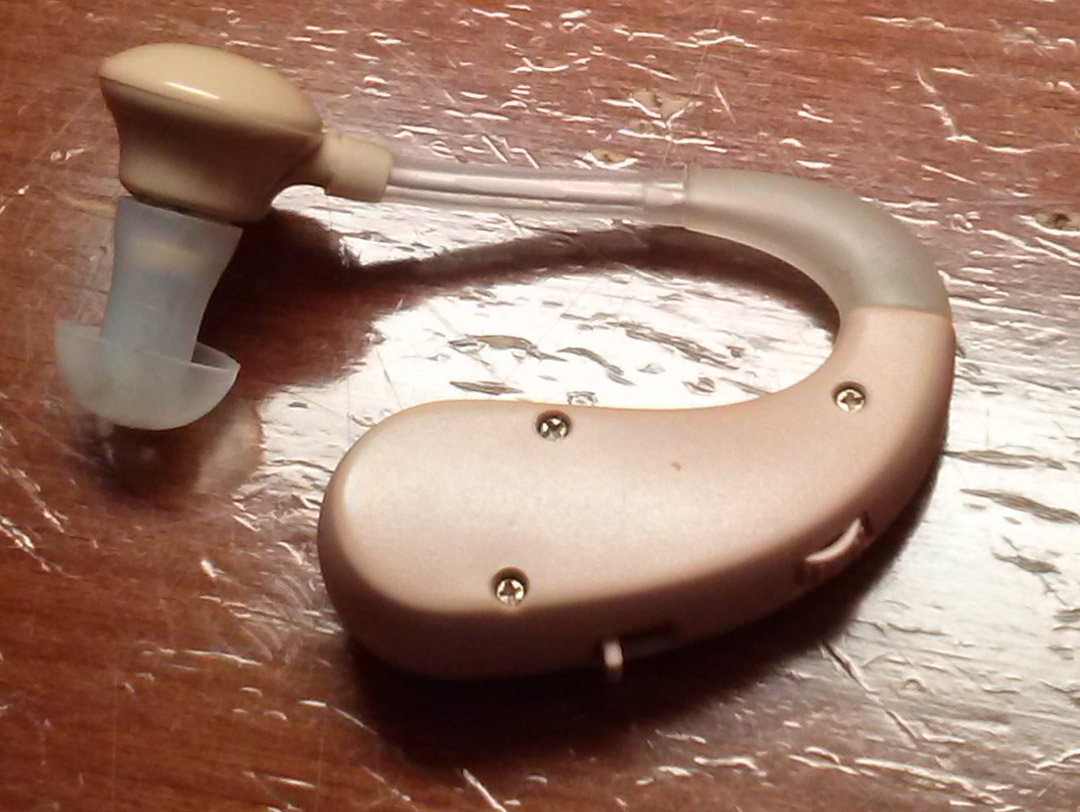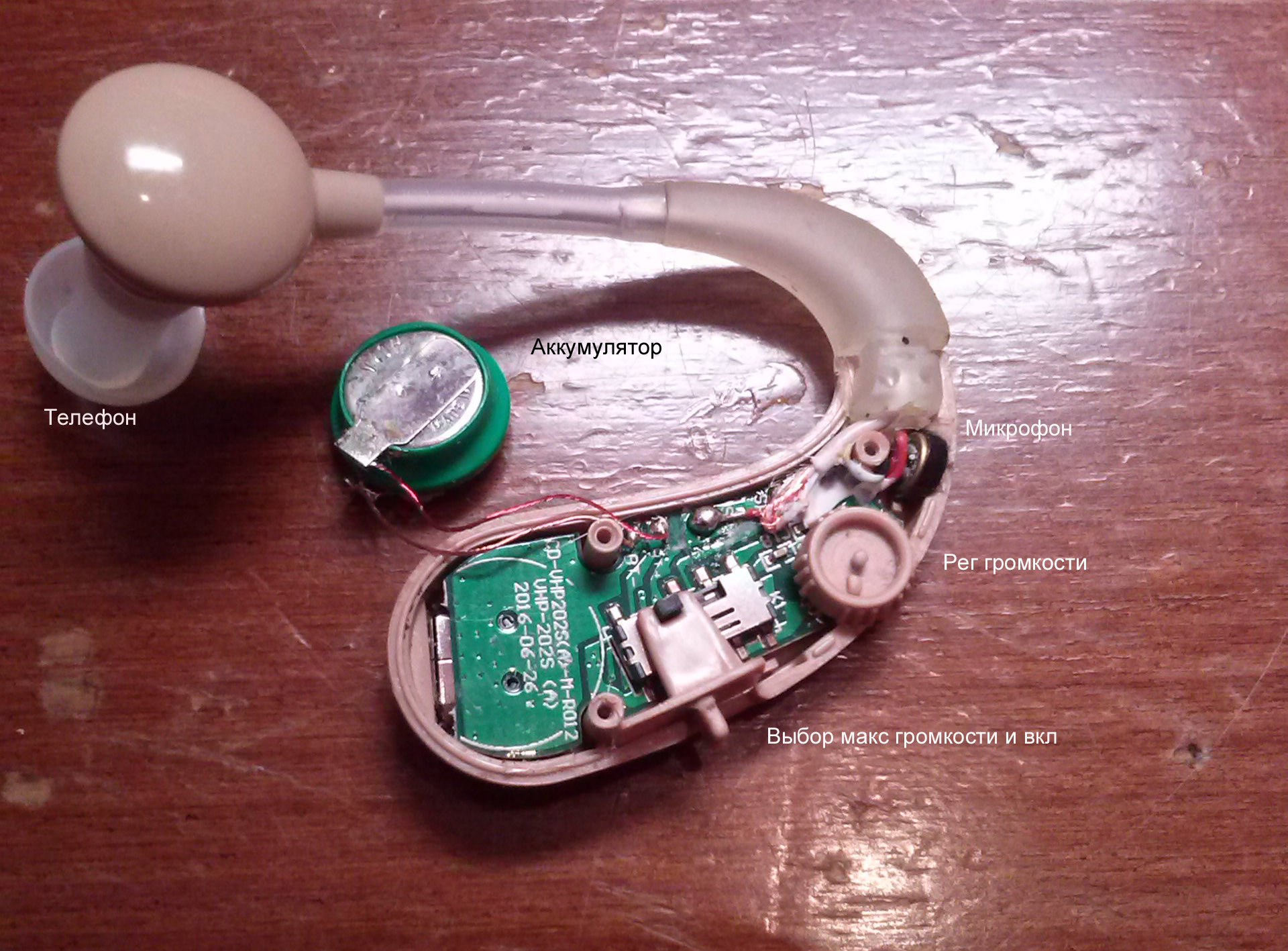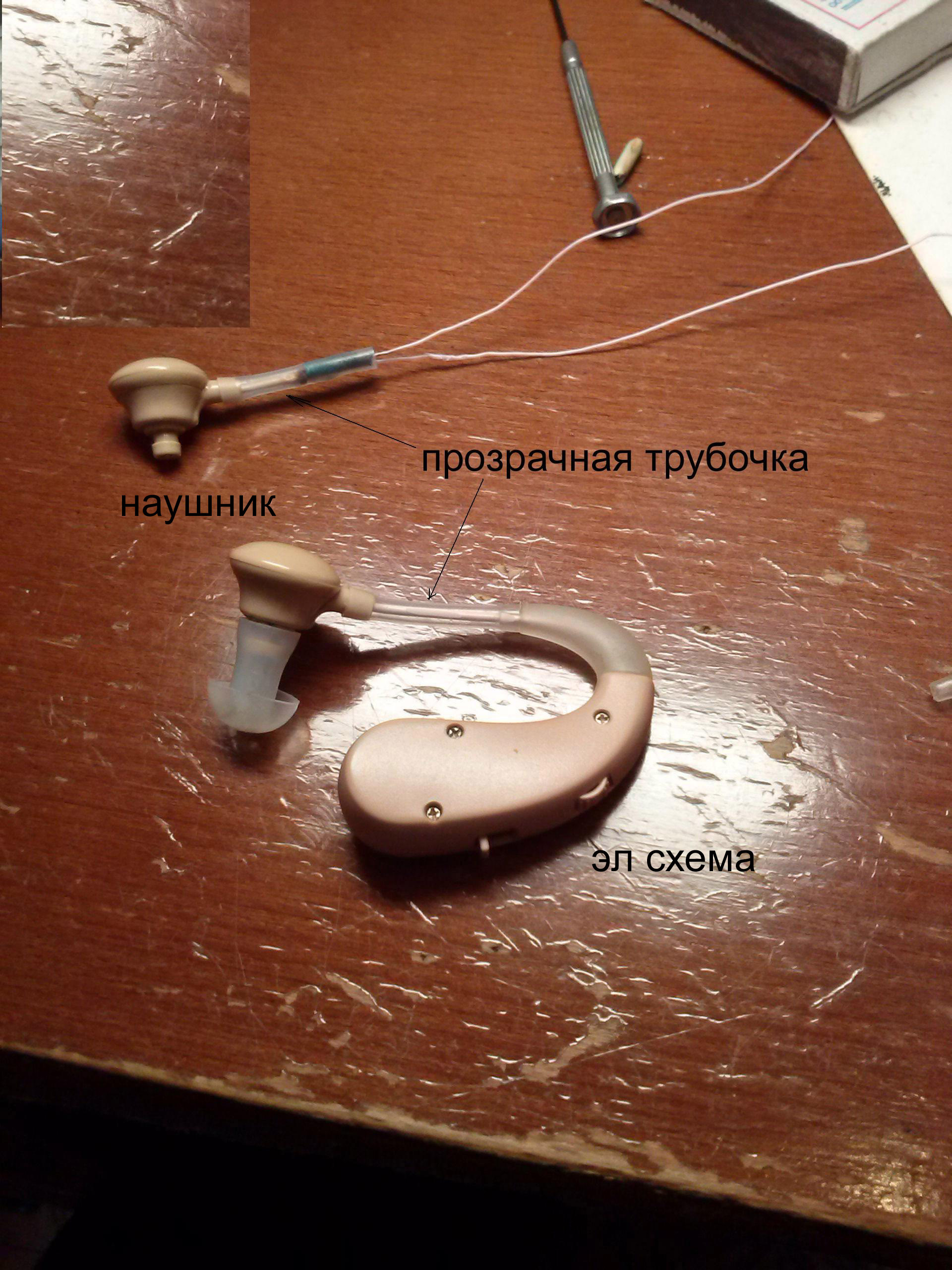
The reason for the repair, the device is "deaf and dumb" even after the battery is charged. After disassembling the body of the device, this is what happened:

The voltage measured on the battery was 1.4 volts (short-circuit current of about 180 mA for 5 seconds). Measuring the resistance of the phone (earphone) showed an open circuit in the phone. Soldering the earphone, parsing it led to interesting, unexpected results, in fact, it is because of this that I decided to publish these notes. So, the earphone is connected to the circuit through a special wire.

The peculiarity of the wire is its "multi-core". The wire consists of two conductors, yellow and pink, covered with an insulating sheath. Conductors are about 12 PEL-type wires with a diameter of 0.09 mm twisted into a single conductor. So two multi-colored conductors are obtained, which commute the headphone and the electronic circuit. It was this conductor that found itself "in the cliff". A detailed examination revealed the place where the guides were ... cut off. The fact is that a silk thread is laid between the yellow and pink conductors. Therefore, when the break point was cleared of the insulating shell, and the thread was burned in the flame of a match, BOTH conductors were broken and easily separated from each other. Which is surprising. This design of the connecting wire is designed for frequent bending of the wire,while maintaining the integrity of the electrical connection. It is for this purpose that over 10 conductors are twisted together. But the revealed picture shows that ALL the conductors in BOTH conductors in pink and yellow are cut off. In addition, the sheathed conductor is placed in a transparent tube and only then laid as a headphone-to-circuit connector. See the last picture. A simultaneous breakage indicates ONLY a factory defect. But, according to the owner, this device was operated very carefully for almost 4 months before it "went out of order". External examination did not reveal any "violent" actions. Surprising by the PERFORMANCE of this device AT ALL. The device shouldn't have worked! Well, the repair consisted in the fact that the broken wire was replaced with a regular stranded wire.Tinning the factory wire requires good cleaning of the conductors and subsequent tinning of them on a hard surface. The result is in the photo below. Subsequent installation and switching on confirmed the serviceability of the device. (By the way, the phone's resistance is about 140 ohms.) It would seem that this story is over ... ??? No, no! A week later, my customer, upon meeting with me, said that the operating time of the hearing aid, after the repair, had almost doubled. Previously, the device was charged once every 1.5-2 days, now the charge "lasts" for almost 4 days ... Until now, the sample presented for repair, along with its "diagnostics and treatment", as well as subsequent changes in its operation , make up a SECRET for me.Subsequent installation and switching on confirmed the serviceability of the device. (By the way, the resistance of the phone is about 140 ohms.) It would seem that this story is the end ... ??? No, no! A week later, my client, upon meeting with me, said that the operating time of the hearing aid, after the repair, had almost doubled. Previously, the device was charged once every 1.5-2 days, now the charge "lasts" for almost 4 days ... Until now, the sample presented for repair, along with its "diagnostics and treatment", as well as subsequent changes in its operation , make up a SECRET for me.Subsequent installation and switching on confirmed the serviceability of the device. (By the way, the resistance of the phone is about 140 ohms.) It would seem that this story is the end ... ??? No, no! A week later, my customer, upon meeting with me, said that the operating time of the hearing aid, after the repair, had almost doubled. Previously, the device was charged once every 1.5-2 days, now the charge "lasts" for almost 4 days ... Until now, the sample presented for repair, along with its "diagnostics and treatment", as well as subsequent changes in its operation , make up a SECRET for me.Previously, the device was charged once every 1.5-2 days, now the charge "lasts" for almost 4 days ... Until now, the sample presented for repair, along with its "diagnostics and treatment", as well as subsequent changes in its operation , make up a SECRET for me.Previously, the device was charged once every 1.5-2 days, now the charge "lasts" for almost 4 days ... Until now, the sample presented for repair, along with its "diagnostics and treatment", as well as subsequent changes in its operation , make up a SECRET for me.
The ONLY explanation available to me is a marriage in the manufacture of a stranded wire. Moreover, such a defect that the place of the gust still conducted current and allowed the device to work. At the same time, there was a short circuit at the place of the gust, leading to the fact that the battery discharge increased not only from powering the circuit, but also from the short circuit at the place of marriage. Subsequent mechanical deformations led to the final rupture of the conductors.
